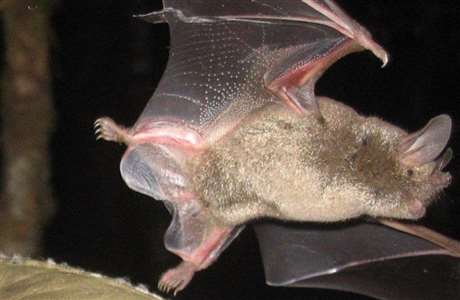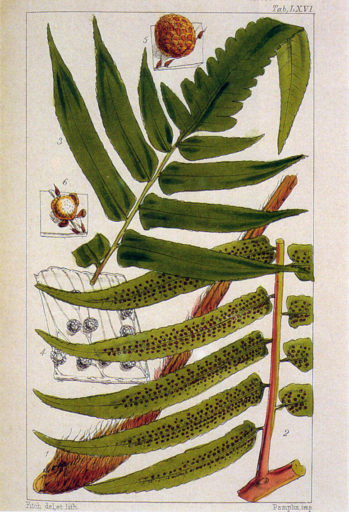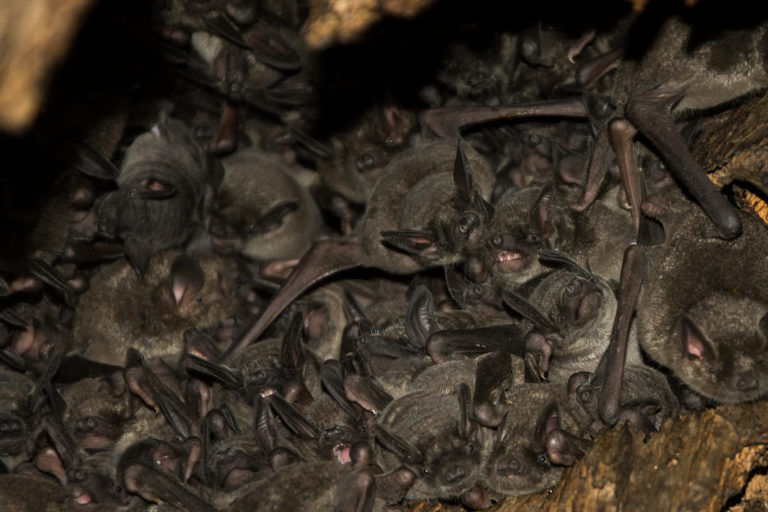University of Auckland researchers, James Brock and Kathleen Collier, have discovered yet another reason why we really should appreciate our native bat species. It seems short-tailed bats have a role to play in spreading fern spores throughout the forest, helping the spores to spread a greater distance than they might otherwise manage without a helping wing.

“In this study we examined spore viability of material located within short-tailed bat faecal pellets to establish whether short-tailed bats are a potential dispersal vector for ferns in New Zealand native forest. Birds, rodents, bats, and invertebrates consume fern sporangia as a primary nutrition source, or through secondary consumption. Although fern spores do germinate after gut passage in bats, we know of no studies that have determined the percentage of spores that germinate following bat consumption.”
More ‘primitive’ than flowering plants, ferns don’t produce pollen or seeds. Instead they spread by releasing spores and can produce large numbers of spores over the course of a year. But distribution away from the parent fern can be limited.
“Ferns produce abundant spores (asexual propagules by which ferns disperse); for example, tree ferns (Cyathea species.) can produce up to half a million spores per annum. Most spores are dispersed by wind. The distance that spores travel varies by release height and wind velocity: for short-statured terrestrial ferns, the vast majority of spores disperse < 2 metres; for taller ferns it is up to 100 metres in closed forest conditions, and in open environments up to a couple of kilometres, and a small percentage are dispersed much greater distances.”

Research carried out back in the 1970s showed that Cyathea species and Dicksonia squarrosa spores were present in the faecal material and stomach contents of New Zealand endemic short-tailed bats Mystacina tuberculata, but the viability of spore material that has passed through the gut of a short-tailed was unknown until now.
“We collected samples of bat faecal material from three short-tailed bat roost sites in the 450 hectare Pikiariki Ecological Area of Pureora Forest Park, Waikato. The bat roosts were located within three separate tree trunks: (1) standing dead trunk (species unknown), (2) mataī and (3) māhoe. Samples comprised up to 50 grams of faecal pellets from the base or floor of each roost cavity. The faecal samples were returned to the laboratory in ziplock bags and refrigerated (c. 4 °C).”
The faecal pellets were then dried and prepared for spore germination.
“Forty faecal pellets were taken at random from each roost (120 in total) and dried at 21°C for five hours in a drying oven. After inspection for any potentially wind-dispersed spores on faecal pellet exteriors (only two spores were found at × 100 magnification), we ground the pellets, four at a time, using a pestle and mortar, and placed the ground remains in petri dishes (four ground pellets per dish) containing filter paper moistened with 1 cm3 of water. The petri dishes were sealed (to control for moisture loss in the growth chamber) using silicone food wrap and placed in a growth chamber lit for 14 hours per 24 hour cycle, with a maximum temperature of 21°C (14 hours) and a minimum of 14°C (10 hours). The conditions in the growth chamber were set five degrees higher than the mean local high temperature of Pureora (15.7°C) to encourage fast germination of viable spores. The petri dishes were inoculated for a 14-day period and were re-moistened after 7 days.”
The petri dishes were then examined under microscope for evidence of germinating spores and the spores identified to genus or spore type (trilete or monolete) where distinguishing features were not clearly visible. Several different fern spore types were identified.
“Fern spores recorded from within bat faecal pellets included Cyathea (5 spores), Dicksonia (2), Hymenophyllum (3) and Microsorum (3) as well as monolete (6) and trilete (12) spores that could not be further identified. The 31 spores were not evenly distributed between roost samples (40 faecal pellets per roost): 20 spores were identified from the dead tree roost sample, 11 from the māhoe roost, and none from the mataī roost.”
Germination varied between the different types of fern spores.
“Of 31 spores in 120 faecal pellets, 13 germinated (41.9%). All Microsorum spores germinated, three of five Cyathea, one of two of Dicksonia, four of 12 of unidentified trilete, one of three of Hymenophyllum, and one of six unidentified monolete spores. The mean abundance of germinating fern spores per faecal pellet was approximately one germinating fern spore per 5 faecal pellets.”

This is the first study in New Zealand to show that fern spores dispersed by bats can germinate.
“The fern spores that germinated from short-tailed bat faecal samples (in the orders Cyatheales, Hymenophyllales and Polypodiales) were either part of the bat’s diet, or ingested through secondary consumption of prey (e.g., wētā), or the prey’s habitat. This study highlights the potential of fern spores to survive gut passage of bats.”
The extent to which fern spores are distributed by the bats will depend to some degree on how often, where and when bats poo – and that isn’t something we know a great deal about as yet!
“The low abundance of viable spores present in the faecal pellets does not necessarily limit the significance of bats as dispersers of ferns. A single bat can readily produce up to six faecal pellets as a stress response when being handled; and although data on Mystacina gut retention time etc. and faecal/gut productivity are not available, it is not improbable that a bat passes at least two viable spores per day at a distance from the parent sporophyte. However, estimates of the likely number of viable fern spores moved by a population of bats require greater sampling effort. Gut retention time is one determinant of the likely distances that the spore material is transported in the bat gut. However, defecating habit away from the roost, e.g. during flight or foraging etc., is not known, so it is not possible to establish substantively the dispersal kernel or frequency of viable fern spore dispersal without further work on the ecology of the short-tailed bat.”
This research is published in the New Zealand Journal of Ecology and is freely available online.

